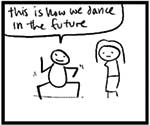| Author
|
claps/snares- peak is to high
|
Maska
IsraTrance Junior Member

Started Topics :
27
Posts :
869
Posted : Jan 28, 2010 05:53
|
that is a good straight forward answer colin...
Usually easy to find with the sweep method, but it helps to find someone in the know to break it down.
Thanks
        assumption is the mother of all fuckups. assumption is the mother of all fuckups. |

|
|
PoM
IsraTrance Full Member

Started Topics :
162
Posts :
8087
Posted : Jan 29, 2010 03:48
|
|
i think it s in the low too or your clap/snare is damn loud ,it would hurt your ears if it was the loudest peak in your mix (in the highs) |

|
|
Locrian

Started Topics :
0
Posts :
24
Posted : Jan 30, 2010 01:28
|
Quote:
|
On 2010-01-26 18:50:25, orgytime wrote:
hi guys,
i got a problem with my snares/claps in the mix.
mostly i layer a snare and a clap for fuller sound, but this makes the problem bigger. if i check the waveforms of the whole mix with smexoscope, the claps peak is to high.
so i thought on using a limiter or compressor on the clap... well it lost its whole energy.
next problem later comes with homemastering, where the clap is higher then the rest, and the whole mix suffer of this one high peak (less loudness ...)...
i saw, that the start of the clap makes this high peak...
you got any suggestions? multiband compressor? witch setting? other stuff?
cheers
|
|
The peak, or transient, is actually a really important part of the sound of handclaps, snare, claves e tc. Compressing it will "kill" the tranisent and it will sound less punchy.
The layering can be one thing to drop(if they are realtively in phase the waveforms will cause positive interference causing a reinforcement up to 6 dB's depending on the phase and how alike the waveforms are). Try to find fuller sounding sounds instead.
If the sounds are eq:ed that youd be another problem. Eq doesn't work good on transients(well not anything really, it's always better to get the right sound from the start. Using an equalizer is generally like sharpening a pencil with a chainsaw. It can sometimes make sound better but never as good as if you found the right sound in the beginning) because it works indepently in respect to time.
To make the sound stand out more while reatining a good punchy sound and level you also could try to rearrange the track a bit. If there is a lot of loud sounds in the same frequencies as the snares/claps you might consider dropping these to make sound come trough(compression and limiting the track will only make this problem worse as you will raise all leavels to a more equal level clouding the mix)
It could also be that the mix simply isn't optimal.
Experiment a little and see what happens. Test every way you can think of and try to find out what the pros and cons of every method is and try to draw conclusions based on what you learn.
Hope this helps and good luck with your track. 
        http://soundcloud.com/locrian/tracks http://soundcloud.com/locrian/tracks |

|
|
orgytime
IsraTrance Full Member

Started Topics :
120
Posts :
1703
Posted : Mar 1, 2010 09:31
|
hey guys, i´ve tried a little bit, and i gotta tell you colin was right!
the problem are the deeper freqs...
i would say about 300-500Hz.
right now, i have cut those freqs, but lost some punch...
i use thomas penton drumset...
at which freq do you highpass the claps and snares?
cheers
        www.soundcloud.com/orgytime www.soundcloud.com/orgytime |

|
|
makus
Overdream

Started Topics :
82
Posts :
3087
Posted : Mar 1, 2010 09:51
|
you have to hipass snares if only they are too bassy and conflict with bass/kick. start with 80 hz, then go up to 120-150.
remember, that most of the snares in tomas penton are processed already. most of them don't need hipass.
       
www.overdreamstudio.com |

|
|
orgytime
IsraTrance Full Member

Started Topics :
120
Posts :
1703
Posted : Mar 1, 2010 11:21
|
yeah i thought of keeping them unEQed, but since this problem with the hight peak appeard i thought about highpass them...
...and if you take a closer look at the penton samples, nearly every sound got subbass...
        www.soundcloud.com/orgytime www.soundcloud.com/orgytime |

|
|
Colin OOOD
Moderator

Started Topics :
95
Posts :
5380
Posted : Mar 1, 2010 14:14
|
Check your snare on a good analyser (not PAZ); snare drums have one tall peak (what I call the 'doof' of the snare') around 200Hz, then nothing below that save low-level rumble, most of which adds nothing to the track and only takes away definition for the kick. Above 200Hz there is usually a dip before the rattle and crack of the snare above 1KHz.
Thomas Penton snares have as much rubbish below 200Hz as any other - and I believe Penton intended his sounds to be processed to fit correctly in our mixes just as much as we would any other sound.
I hipass my snares at about 150Hz, then low shelf at just over 200Hz to get the level of the doof in proportion with the other elements of the snare sound, and to sit right with the track.
        Mastering - http://mastering.OOOD.net :: www.is.gd/mastering Mastering - http://mastering.OOOD.net :: www.is.gd/mastering
OOOD 5th album 'You Think You Are' - www.is.gd/tobuyoood :: www.OOOD.net
www.facebook.com/OOOD.music :: www.soundcloud.com/oood
Contact for bookings/mastering - colin@oood.net |

|
|
orgytime
IsraTrance Full Member

Started Topics :
120
Posts :
1703
Posted : Mar 1, 2010 14:49
|
|
OpenSourceCode
Datavore

Started Topics :
26
Posts :
660
Posted : Mar 3, 2010 17:54
|
|
abraham316

Started Topics :
7
Posts :
121
Posted : Mar 3, 2010 23:51
|
Good info everyone, i have the same problem in many tracks and i tried eq, gate and compression before but i found Colin info very clear, thanks.
TIP OFFTOPIC
BTW for those who have ableton live (i use 7) you can put a reverb with long decay and few wet and use ableton gate plugin and tweak hold and release, its very good to extending the tail of the snare.
        http://www.soundcloud.com/yadah http://www.soundcloud.com/yadah
http://www.soundcloud.com/yadah |

|
|
Psydust
IsraTrance Junior Member

Started Topics :
14
Posts :
91
Posted : Mar 4, 2010 00:01
|
|